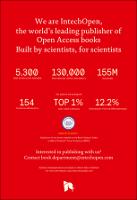Chapter Innovation of Textiles through Natural By-Products and Wastes
| dc.contributor.author | Reis, Albertina | |
| dc.contributor.author | Coelho, Lorena | |
| dc.contributor.author | Maria, Rosa | |
| dc.contributor.author | Batista, Patrícia | |
| dc.contributor.author | Carvalho, Marta | |
| dc.contributor.author | Moura, Bruna | |
| dc.contributor.author | Fernandes, Sara M. | |
| dc.contributor.author | Malgueiro, Regina | |
| dc.contributor.author | Pintado, Manuela | |
| dc.contributor.author | Sofia Beça Ribas da Silva, Ana | |
| dc.contributor.author | Silva, Mário J. | |
| dc.contributor.author | Monteiro Marques, Mario | |
| dc.contributor.author | Costa, Catarina | |
| dc.contributor.author | Lúcia Sá, Vera | |
| dc.contributor.author | Manuel Merino, Fernando | |
| dc.contributor.author | Silva Abreu, João | |
| dc.contributor.author | Marinho, Augusta | |
| dc.contributor.author | Isabel Magalhães, Ana | |
| dc.contributor.author | Faria, Pedro | |
| dc.contributor.author | José Magalhães, Pedro | |
| dc.contributor.author | Jorge Silva, Ricardo | |
| dc.contributor.author | Alexandra Pereira, Jéssica | |
| dc.contributor.author | Manuel Gaião, Joaquim | |
| dc.contributor.author | Helena Vilaça, Maria | |
| dc.contributor.author | Gabriela Ventura, Sandra | |
| dc.contributor.author | Teles, Ângela | |
| dc.contributor.author | Rosa Mourão, Raquel | |
| dc.contributor.author | Morgado, José | |
| dc.contributor.author | Sofia Gonçalves, Mónica | |
| dc.date.accessioned | 2021-06-02T10:13:10Z | |
| dc.date.available | 2021-06-02T10:13:10Z | |
| dc.date.issued | 2020 | |
| dc.identifier | ONIX_20210602_10.5772/intechopen.93011_472 | |
| dc.identifier.uri | https://library.oapen.org/handle/20.500.12657/49358 | |
| dc.description.abstract | Nowadays, the competitiveness of the textile industry and the consumers’ interest have been increasing the demand for innovative and functional textiles. Allied to this, sustainable developments are playing an increasingly important role in the textile industry. Such concerns led to a new development strategy based on the valorization of bio-based wastes and by-products of different industries, inserting this in the circular economy paradigm. These bio-based wastes and by-products come from several industries, as the agri-food industry. These resources present an enormous potential for valorization in the textile finish due to their intrinsic properties (antimicrobial, prebiotic, antioxidant activity, among others). This chapter will review the latest innovation and textile product development through different by-products and wastes, their main properties and characteristics and the advantages that they offer to the textile industry. | |
| dc.language | English | |
| dc.subject.classification | thema EDItEUR::T Technology, Engineering, Agriculture, Industrial processes::TB Technology: general issues::TBC Engineering: general | en_US |
| dc.subject.other | innovative textiles, functional textiles, waste valorization, sustainability, circular economy, protein fraction, agro-industrial wastes, vegan leather, leather waste, alternative leather | |
| dc.title | Chapter Innovation of Textiles through Natural By-Products and Wastes | |
| dc.type | chapter | |
| oapen.identifier.doi | 10.5772/intechopen.93011 | |
| oapen.relation.isPublishedBy | 09f6769d-48ed-467d-b150-4cf2680656a1 | |
| oapen.relation.isFundedBy | H2020-SMEINST-2-2016-2017 | |
| oapen.grant.number | 805055 | |
| oapen.grant.acronym | VegeaTextile |

